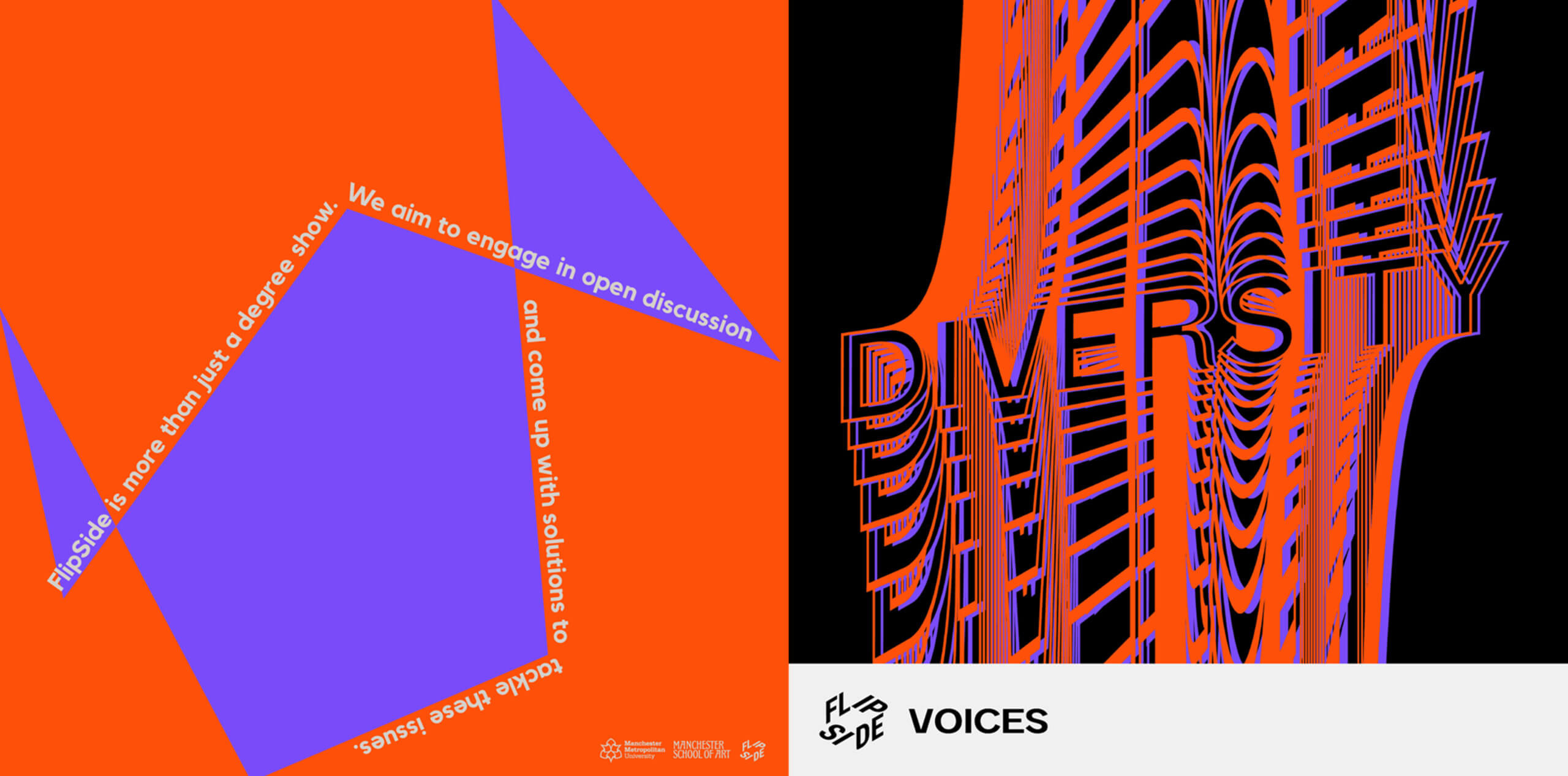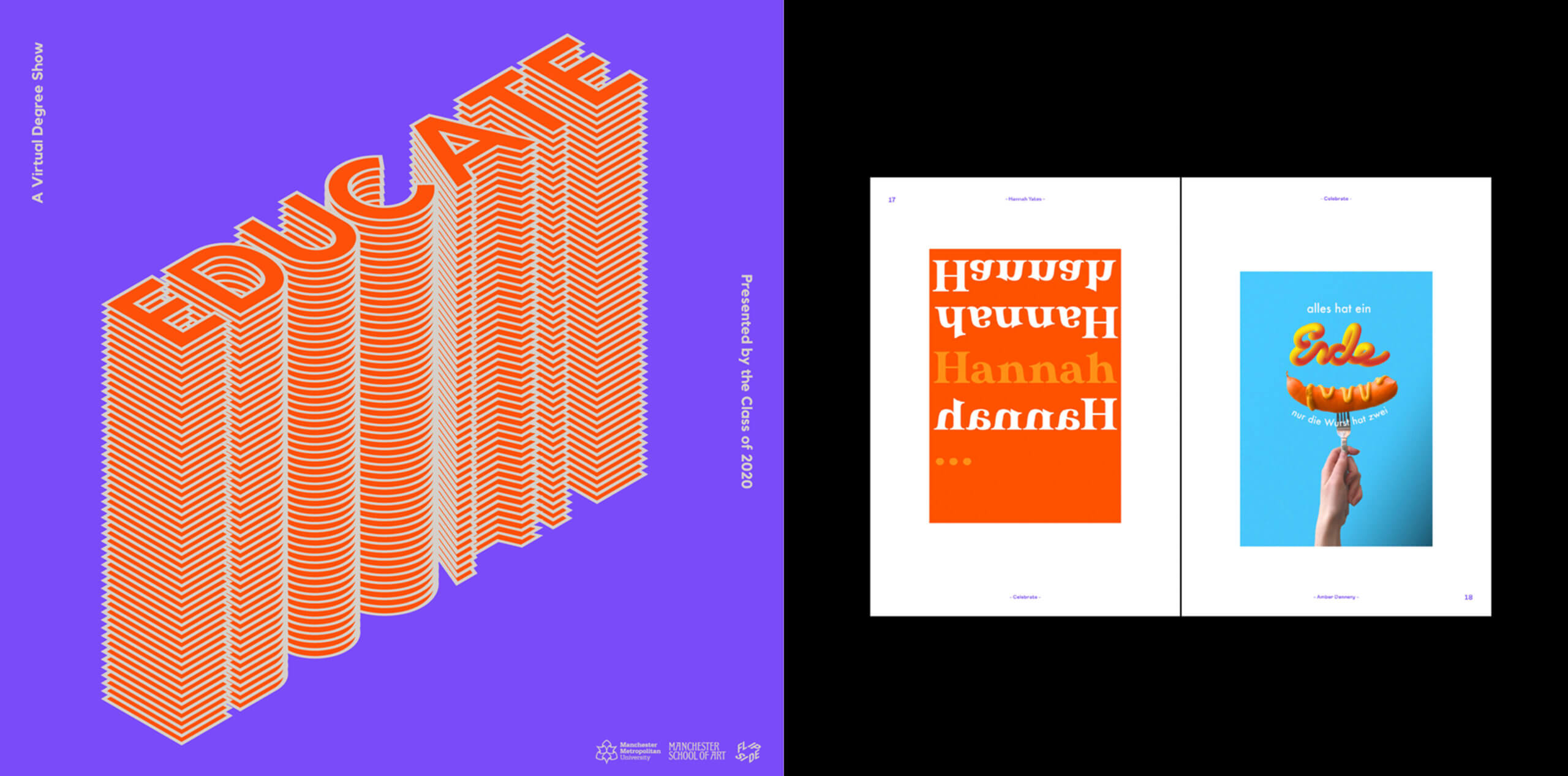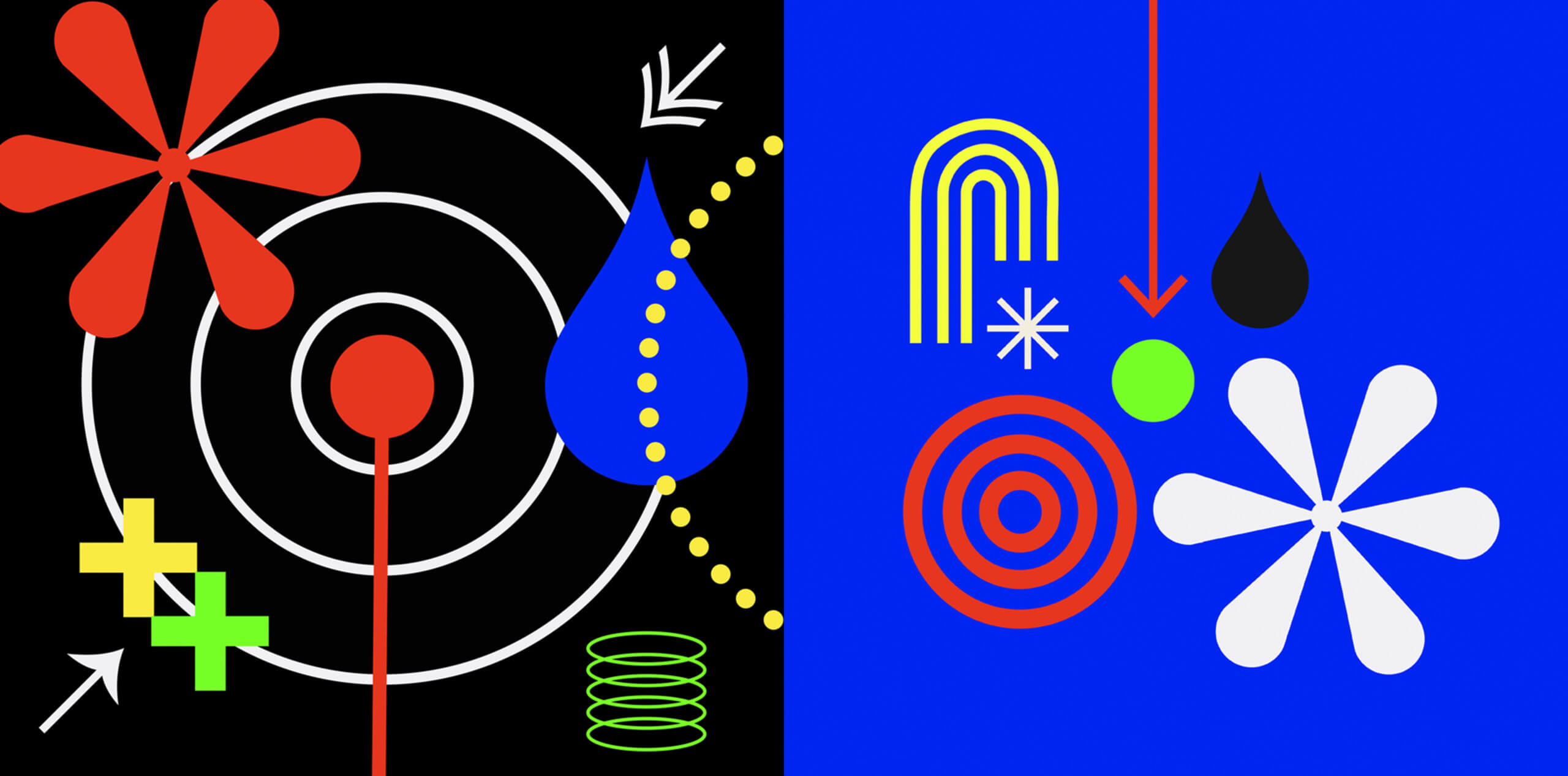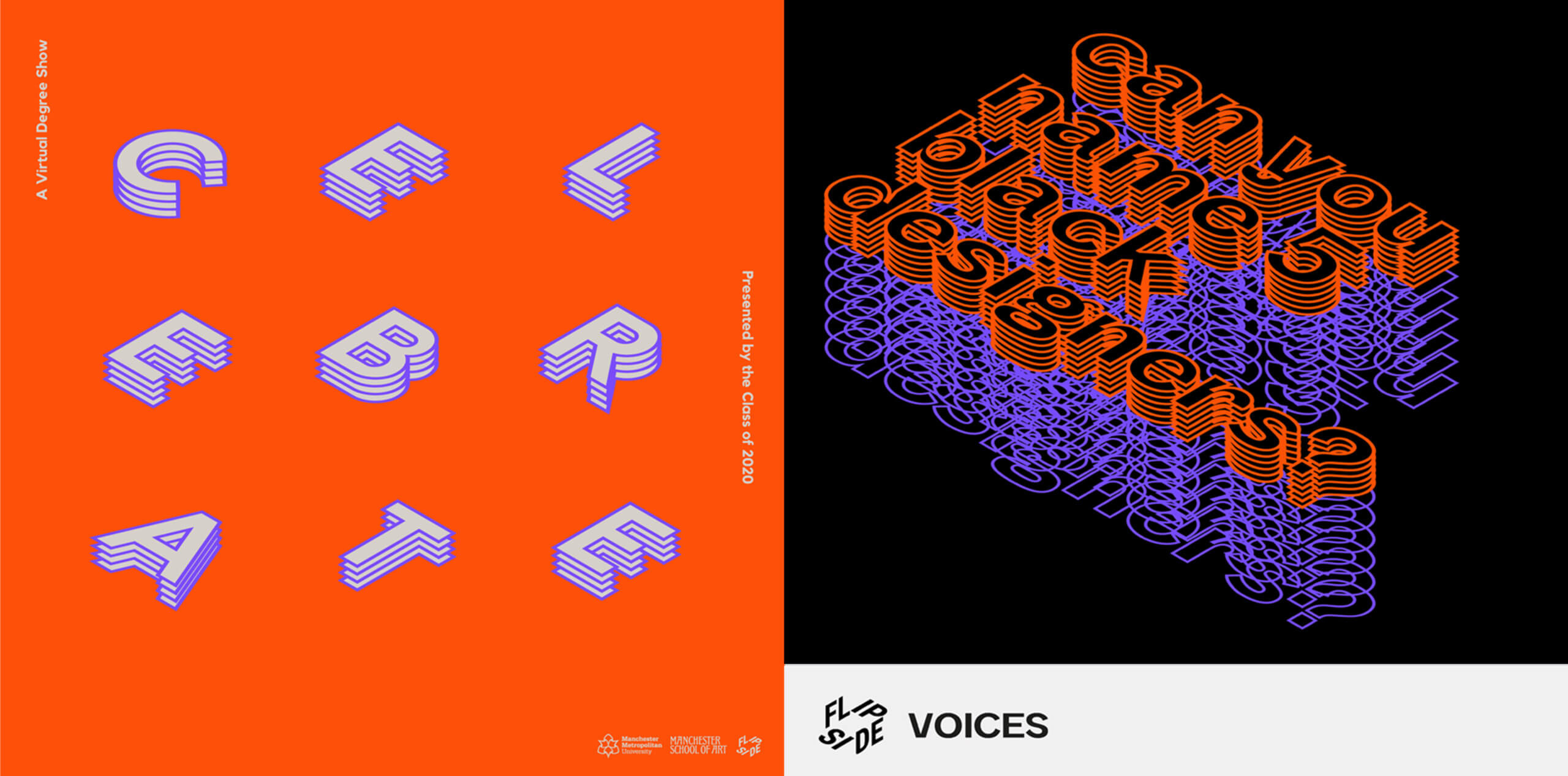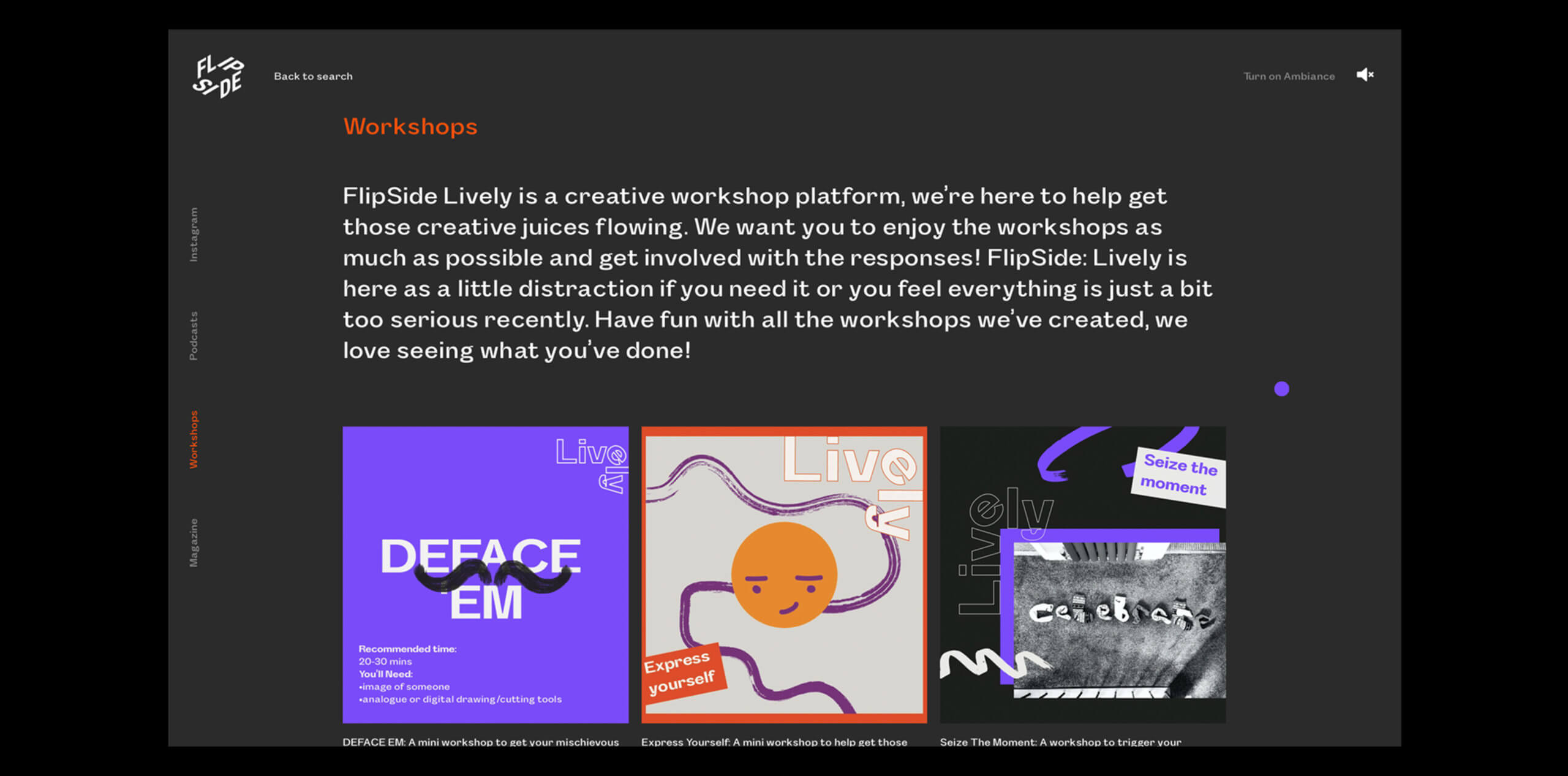After completing a degree in Fashion Communication at Central Saint Martins in London, multidisciplinary designer Jada Giwa studied Graphic Design at the Manchester School of Art, graduating in 2020. She also has a background in photography and has worked on projects that combine all these disciplines building a multifaceted portfolio of work that cleverly showcases all of her skills and interests.
Jada is passionate about adding value to the community through her design work and finds inspiration in projects that drive positive social change. This interest led her to create FlipSide, the branding project she worked on for her end of year degree show. Throughout university and after numerous industry studio visits, Jada became fully aware of the lack of diversity in the design industry and that people of colour are massively underrepresented. As Jada tells us, “although I believe that industries should not diversify their companies just on the basis of how you look, I do believe that it’s really important to have people from different cultural backgrounds included and actually being able to see yourself in the industry makes a difference.” This inspired her to create a platform that focuses on the ‘flip side’ of the creative world, using a virtual degree show to educate and open up conversations around the themes of diversity and inclusion. This included all levels of the industry from education through to professional settings, as well as inspiring young creatives to be part of a growing community.
Her varied design background in fashion, photography, creative direction and design allows Jada to bring a multi-skilled and broad-minded approach to design briefs. She often combines storytelling with a solid, problem-solving concept and well-crafted aesthetics. She believes it’s important for young designers to grow in confidence through practise and collaboration and being true to your values is the best way to find your voice and place in the industry.
After the recent societal changes brought about by the Covid pandemic, Jada has hopes for a more socially conscious industry and is now even more mindful of how design can have a positive impact on the world around her. Currently freelancing, she’s grown more confident using digital platforms as a tool to engage with audiences in a new way and is excited to see what changes technology will bring to how creatives approach future project briefs. We look forward to seeing what she will be working on in future!
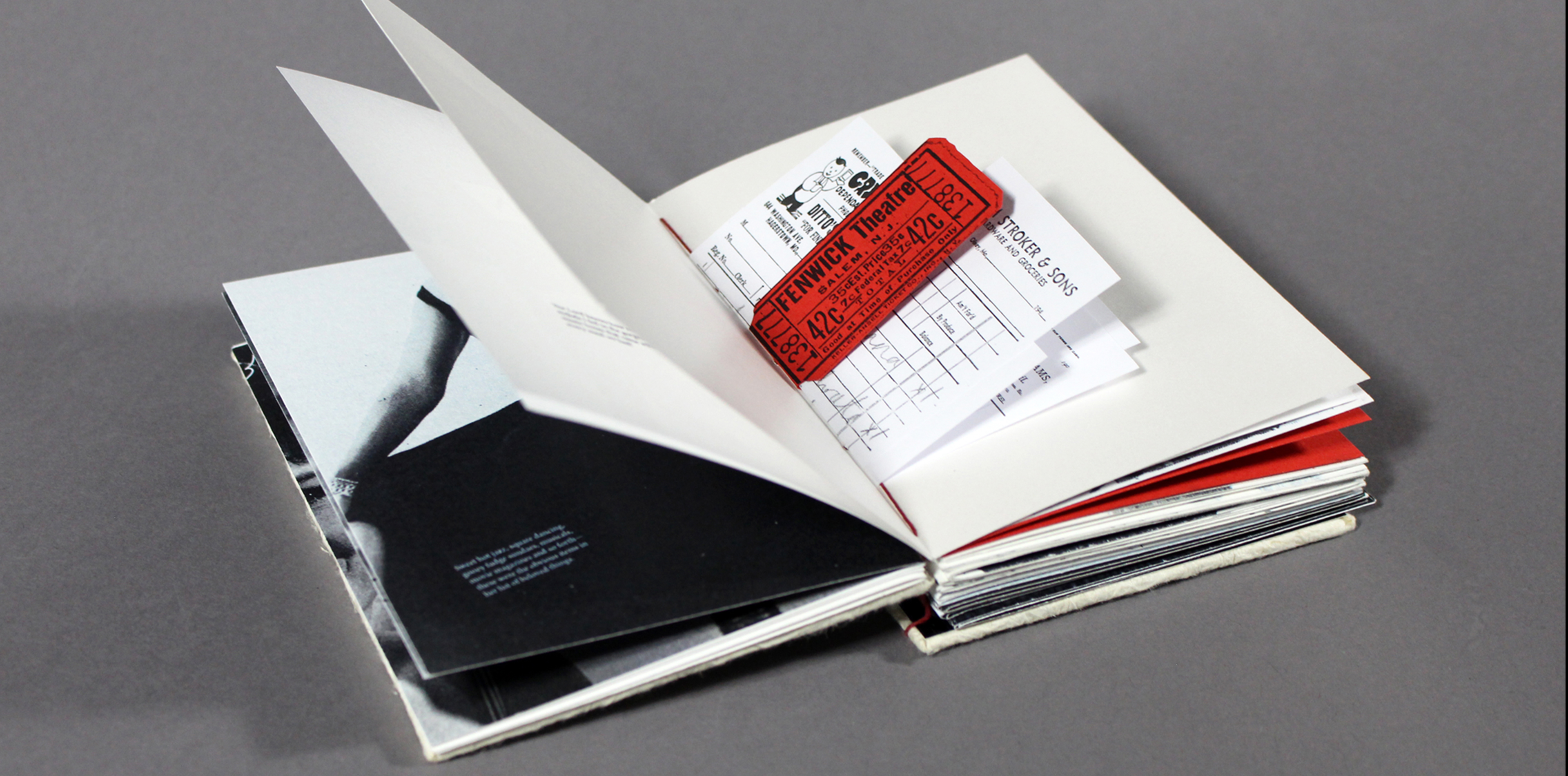
We caught up with Jada to discuss why she set up FlipSide, her experiences managing a collaborative project and tips for current design students.
Why did you decide to become a designer and how has that ambition evolved over time?
My idea of what a designer is has changed since my time at uni. I used to think (and I think a lot of people still do) that a graphic designer solely creates logos, posters and typefaces. Although these are essential in design, I’ve realised it is much broader than that. There are so many different avenues you can go into just from studying it and having an unconventional design background can be an advantage. Studying photography at school meant I had to have a keen eye for detail and know what works and what doesn’t. I loved the fact that an image can be used to document something, convey an emotion or create a narrative. And it’s the telling a story part that I’ve always loved communicating. I chose to study graphic design at university as I loved that it does not just focus on the aesthetics but it’s also about problem solving. I was able to incorporate what I learnt from studying photography and fashion with design and create meaningful concepts that can hopefully inspire and help make positive change.
I studied at Manchester School of Art and I wish I’d had more conviction and valued my work more at the time and not worried as much about grades. I was fortunate enough to attend a university that was quite open about the fact that grades aren’t everything and that comments are subjective, so I guess it was more my own worry that I needed to get over. I wish I had taken my failures in my stride and not penalised myself for it, as I know now that it helps you grow!
Why did you decide to set up the FlipSide platform and can you tell us a bit your experiences managing the project?
The concept for FlipSide came about when I first noticed that the design industry was not diverse enough. Being a really keen student, I was always really excited when we had studio visits as it was our chance to have an insight into what the design industry would be like and the kind of work the studio made. However, when the studios would show a photograph of the whole team, I’d immediately feel like I was not represented as there were no POC/black people.
Although I believe that industries should not diversify their companies just on the basis of how you look, I do believe that actually being able to see yourself in the industry makes a difference; that you feel included. Therefore, I decided to channel this personal experience into one of my university briefs, which was to come up with the branding and promotion for our final end of year degree show.
I wanted to use the degree show platform to celebrate the students’ work whilst educating the public about important issues in the industry such as diversity and inspiring the audience to be part of a generation that wants to create positive change. I was fortunate to have seven incredible, talented peers join me and turn this vision into a reality. At the start of forming our team, everything was going smoothly, until Covid happened and we had to reimagine all of our ideas to exist digitally. As for everyone, it was a very challenging time, having regular Zoom meet-ups instead of being in the studio. However, we would all agree that it was a great experience to work on such a fast-paced live project at home during a global pandemic.
Where do you think the design industry is heading in the next five years and how will you adapt?
In the next five years, I think the design industry will be more technology fluent but also hopefully a more socially conscious driven industry. Since entering into this pandemic, it has highlighted our need and reliance to use digital platforms as a tool to communicate when we could no longer have those interactions physically. Particularly for us recent graduates, many of us who also like to work with print, installation and fashion for example, we had to start over and transform these original ideas to work in the digital world as there wasn’t really another option. It has made this industry find alternative ways to keep people engaged and creative online, but also consider the benefits of producing sustainable design.
In recent years there has been a rise of people demanding environmental change and so I feel designers not only have to work more digitally but also have to be mindful of how their actions affect the world around them. Since the last few months, I’ve learnt to adapt to new situations quickly. I feel a lot more confident working purely through digital means and I hope to continue to do my part by taking responsibility for my actions as a creative; always starting off a project having empathy.
A lot of people in the creative industries struggle with imposter syndrome and self-doubt – have you experienced this and how do you deal with it?
I’ve always been someone to doubt my creative ability. In a team or working individually in a project, I’m so confident and get really stuck into them, but for some reason I’ve always struggled to put myself out there. I think it was a mixture of being a perfectionist but also comparing myself to others. Over time, and to be honest only really now after graduating, I can say that I don’t feel like that anymore and I really do believe in myself. I’ve realised that I never needed to rush into anything as everyone is following their own path. Things happen for a reason and as long as you work hard and you’re doing everything authentically, it’ll all work out.
Project brief – @futureverything
What top tips would you give to current design students or women considering a career in the design industry?
My first tip would be to not doubt yourself. There is always a space for you in the design world which is why I fell in love with it. Design is so broad and is constantly evolving – you don’t have to box yourself up and be only one thing. But also, it is more than okay to specialise in one thing. You just have to do you!
Another tip would be to collaborate with people that are outside of your course and uni. It is such a great way to meet new people, exchange skills and learn from each other, making you more experienced and prepared to work in industry teams. Oh, and my final tip would be to tackle issues you care about!
Where do you get your inspiration from and how do you approach a new project?
As clichéd as it sounds, I really am inspired by everything. I think with graphic design, as it’s about problem solving, being inspired by different things is key in order for it to be effective and unique for that specific project. What I love about design is that we are constantly exploring, observing and testing to find the best possible solution. However, if I were to pick one thing it would be people. I love understanding the way people work and why they do what they do. I enjoy being able to share or tell their stories in a creative way.
Do you have any female role models or mentors who have shaped your career?
Two female role models that come to mind are both teachers, one at secondary school and the other at university. My secondary school teacher, Mrs Bowden was the first person to really get me excited about photography and supported me throughout. School can be hard for so many reasons, but this subject was always a great escape and since then I’ve never been seen without a camera in my hand. My other role model is Katie Jones, founder and creator of Fresh, a magazine that aims to shine a spotlight on black and Asian designers and creatives. She was also a TA at my uni, but more importantly, a great friend throughout FlipSide and after.
Top 5 female creative crushes are:
- Danielle Rhoda – Illustrator @danielle_rhoda
- Lydia Jones-Parry – Sustainable designer @by_binks
- Nadine Ijewere – Fashion photographer @nadineijewere
- Isobel Platt – Designer, Maker, Illustrator @isobel_platt
- Katie Jones – Designer @mae_jones
FlipSide team:
- Jada Giwa – concept and art direction, broadcasting, social media, student interviews @jadagiwa
- Christie Payne -Tate – workshops, broadcasting @christabelpaynt_
- Grace Astin – magazine, invitation @grace.astin
- Sam Simpson – broadcasting, magazine @samueljordandesign
- Oskar Walin – web design @oskarwitha.k
- Elliot Nightingale – web design @elzdesign2020
- Lili Cox – interviews, magazine @designs.lili
- Danielle Blackledge – workshops, social media @daniedgedesign

